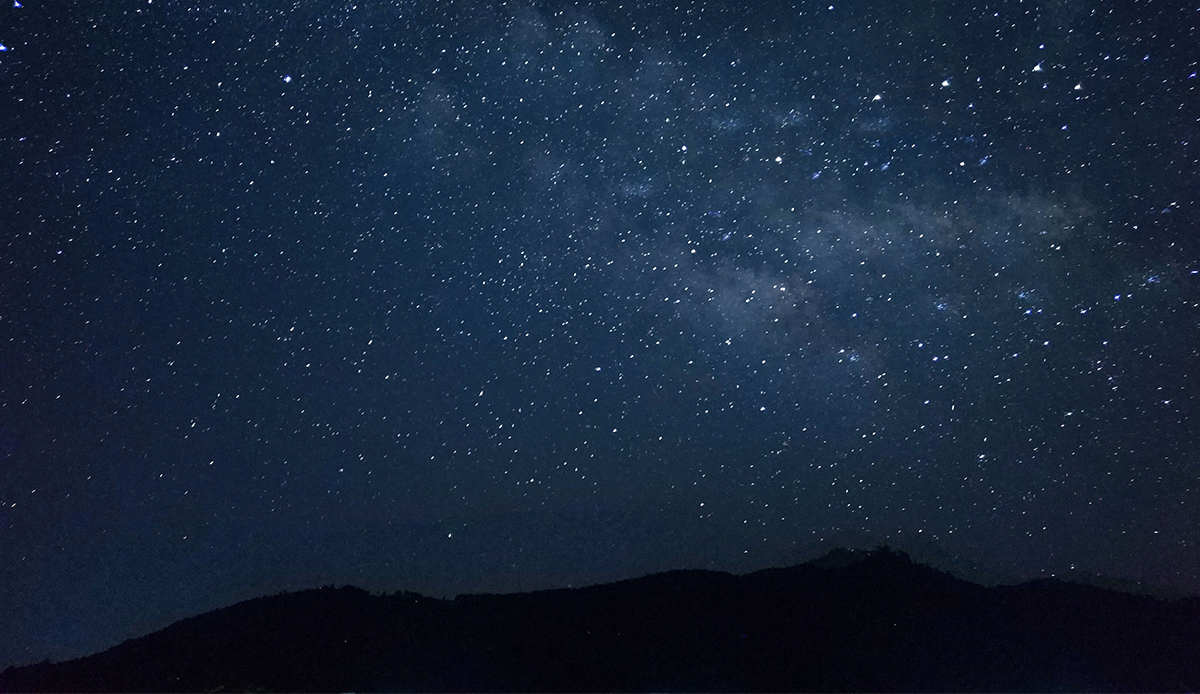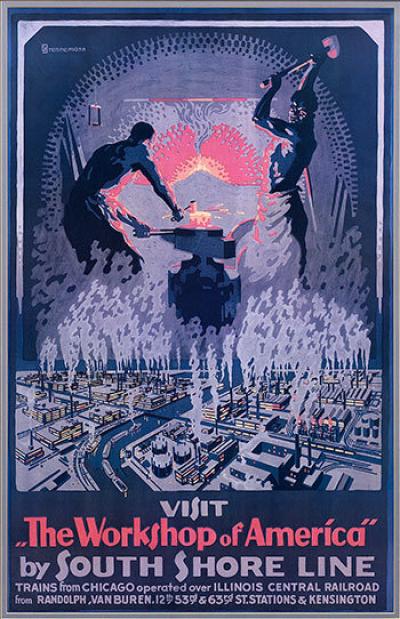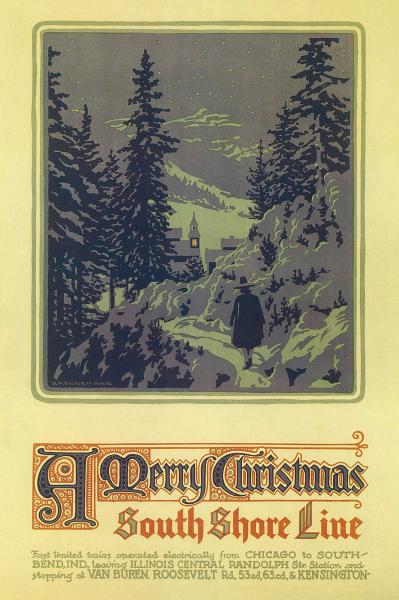The Posters of the South Shore Line
VISIT..THE WORKSHOP OF AMERICA"
One dot in the ellipses is missing. See? There are only two dots and only the end quotation mark. So there are words missing and the quotation is so well known that it does not bear repeating, and accuracy demands that it be done this way.
But I am avoiding the image in front of me.
The poster is black. Black is the default color of this poster as white is the default color of the beaches.
The poster is terrifying. The bottom third of the drawing lies below a slag gray shoreline. You know it is a shoreline because it is not a straight line. Below that line the factories are placed in straight rows. Their straightness is one thing that differentiates them from organic things, like dunes, which are curved.
The factories are horizontal like Frank Lloyd Wright’s homes, like the Midwestern prairie. They are horizontal and they are arranged along streets and the land (once dunes) they are on is gray and the horizontal slats of windows are orange and yellow with fire and the entire complex of steel mills looks like a computer circuit board only circuit boards have not yet been invented.
There is a smoke stack rising from each building. The smokestacks are black as are the sides of the buildings and the roofs are gray like the ground. And the smoke from the smokestack is the same gray. And the sky is black.
The top two thirds of the image, rising above the smoke and surrounded by their own lighter, or rather less dense (because again black is the default background color) smoke, a silver-colored smoke, two steel workers work by an anvil. In the distance, over what would be the lake if it had not been rendered the color of steel, there’s a butterfly shaped stylized flame. The red-orange from the flame runs down the front of the steelworkers’ bodies and lights up one steelworker’s face. There is an anvil between them and each man holds a mallet.
The worker to the left is hitting hot ore with his hammer. His face is on fire. The steelworker to the right is muscled and wears a smoke-colored apron, but all the flesh on his face has been melted away. His face is a skeleton’s face and there is fire along his chest and in the cavity of his chest along the ribs and in his nasal cavity and along the cheekbones and his arms are raised and if you follow the trajectory of his mallet it will not come down on top of the ore being shaped into steel but on the top of the other worker’s face, the one who has already done his work. Soon he will be dead as well; his face will also be a skeleton’s.
It is a terrifying poster. It is meant to be inspirational. Perhaps it was inspirational to someone at the time. It’s meant to attract tourists, perhaps like a haunted house attracts tourists.
Running down the street in the city of foundries there’s a passenger train. The passenger train is gray. Inside the passenger train there are waiters serving meals on white-clothed tables. We can’t see the waiters or the passengers. The cushions of the seats are green velvet and the tables are mahogany and there are chandeliers in the ceilings of the cars. The cars are on their way from Chicago to the beaches. There are people inside the cars viewing the cathedrals. The cars are made from steel manufactured in the cathedrals. The sands replaced by the factories.
Visit ..theWorkshop of America” by South Shore Line.
HOMEWARD BOUND
An orange beaked crane flies in front of an orange moon. The sky is the gray of late Midwestern springs. It is a crane or a goose or a carrier pigeon or perhaps it is a heron. Five other birds are flying in formation. Stalin is coming to power in Russia.
A MERRY CHRISTMAS
A pilgrim in a black coat and hat walks on a silvered path through snow-covered shrubs and pines toward a New England-styled church steeple. The only color other than lavendered grays and black is a rectangle of orange in the church window. If there are dunes in this poster, they look like mountains. If there is a lake in this poster, it looks like snow-covered peaks on lavender mountains. If there is a steel mill, it is located inside the church and the man in his pilgrim coat with his lavender legs is walking toward it.
A Merry Christmas. Fast limited trains operate electrically from Chicago to South Bend Indiana, leaving Illinois Central Randolph Street Station, and stopping at Van Buren, Roosevelt Rd, 53rd, 63rd, and Kensington. South Shore Line.
AUTUMN INDIANA DUNES STATE PARK
It is 1926 and there is now a state park. It is always always autumn here. A few miles of duneland have been preserved. Alice Grey, “Diana of the Dunes,” died the year before the state park poster was inked. She had been pistol-whipped in her shack on the beach. The shack had been ransacked and all her writing was destroyed. By 1926 the home she called Driftwood had gone back to driftwood and the land developed into what would soon be the multimillion dollar homes of Ogden Dunes, within sight of the steel mills if you chose to see them. These homes are nestled (the only word) within smaller dunes that are not allowed to walk and wander. They are domesticated dunes. They hide the factories from the eyes of salaried workers and summering city dwellers. The Dunes are pulled across their eyes like a blanket.
“To see the dunes destroyed,” Alice Grey had written, “would be the sacrilegious sin which is not forgiven.” This is one of the few sentences she wrote that still exists.
Who would care? All is driftwood, she said. “Everything I have,” she said, “is made of driftwood, including myself.”
She cut her hair by the length of its shadow on the sand. She would not wear clothing made by a machine. She was the goddess of the vanishing world.
“From the first day of spring,” a reporter for the Chicago Herald Examiner wrote “twice daily she plunges into the surf. From the first of spring when the ice breaks up and floats away, to the end of each fall day finds her breasting the breakers opposite her little lodge called Driftwood. There are no bathing suit regulations nor beach censors near Driftwood and it is said no one would have learned of this hermit maid except for a sudden great demand by fishermen for binoculars which tipped off the proprietor of the general store at Tremont and he told the world.”
She wanted to live like Thoreau. She took her inspiration from Byron’s “Solitude” and from Thoreau and Cardinal Newman. She graduated from the University of Chicago with honors in astronomy and math and Greek and Latin. She wanted to be a scientist like Cowles. She was not an artist like Carl Sandburg or Nelson Algren (another resident of the Dunes) or even an artiste like Margaret Anderson or an architect like Wright or an architect’s or artist’s muse. She was no one’s muse. She studied the stars but there was no place for her to go except here on this strip of dune between the steel mills. She wanted to study the movement of the waves on the movement of the stars. She wanted to study the natural history of the Dunes. She wanted to be left alone.
Where is Diana in this poster? She isn’t in this poster. She died of poisoning from a wound and the wound was to her head and to her heart and the wound was either inflicted by the sheriff or by a man who claimed he loved her but might have murdered her.
In this poster it is autumn and a strip of dune is finally a state park to expiate a bit of guilt or because the city stinks from its famous slaughterhouses and its smoke and from the war and from the mills.
In the ubiquitous v-shaped crotch of dune, the left hand dune in shadow and the right dune in full sun. There are hints of autumnal color: sour gum, sassafras, sumac, oak, red maple, the gentians and the witch hazel, the goldenrod and aster all pooling in the red of dried blood at the bottom of the page. The shadows in this poster are all a blue gray-green and for the first time there are human dwellings on the beach. One looks like an airplane hangar. Two are the universal sign for house: slanted roof, chimney, four walls. There’s a tiny blue-green boat being dragged across the beach, leaving blue-green shadows on the sand, and there are miniature people like Lego men and women.
These dwellings are the beginnings of suburbia. Of Beverly Shores and Michigan City, a hint of what Gary for a few years was but not what it immediately became.
Autumn Indiana Dunes State Park. Electrified All the Way! By South Shore Line.
Recommended
Nor’easter
Post-Op Appointment With My Father
Cedar Valley Youth Poet Laureate | Fall 2024 Workshop







